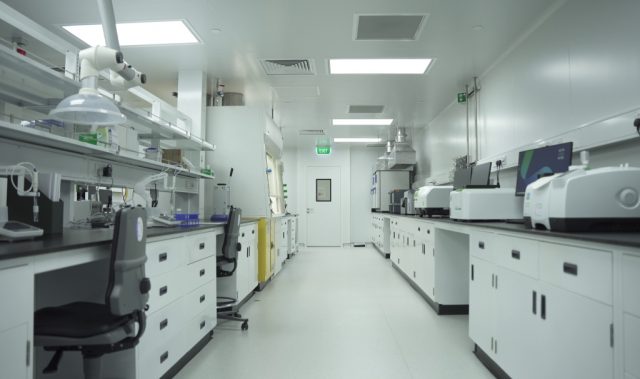
AsianScientist (Jul. 11, 2018) – Once a biological sample—be it a cell or tissue lysate, or a patient’s blood—has been harvested, the clock begins to tick as the quality of the information that can be gleaned from each specimen declines over time. At room temperature, DNA, RNA and protein begin to degrade at different rates, compromising the accuracy of downstream analyses.
If samples are to be processed immediately, keeping them on ice for a short time is acceptable. However, to maintain the stability of biomolecules over the long term, samples need to be stored in a cold enough environment that inhibits both enzyme- and chemical-driven thermal degradation. Freezers that maintain temperatures below -80°C are essential to ensure that samples remain well preserved until they are called upon to reveal their secrets.
Keeping things cool
When it comes to selecting a laboratory freezer, reliability, capacity and versatility are crucial criteria. Offering twice the reliability is the TwinGuard Series of -86°C Ultra-Low Temperature Freezers.
Manufactured under the PHCbi brand—the life sciences business brand of PHC Corporation (formerly known as Panasonic Healthcare Co., Ltd.)—the TwinGuard freezers come equipped with a Dual Cooling system consisting of two compressors that operate independently of each other.
Should one compressor fail, the other is capable of maintaining an interior cabinet temperature of -70°C until servicing can be performed. This dramatically reduces the risk of losing precious samples due to thawing. The highest quality of biological samples is also retained as samples need not be moved between freezers before and after servicing.
Going green
Maintaining temperatures below -86°C is energy intensive, and because of this, freezers are known to account for about 26 percent of the total energy consumed by laboratory equipment. While the TwinGuard freezers come with two compressors, they remain energy efficient and even come with an ECO mode to reduce power consumption.
In normal operation mode, both compressors run simultaneously, switching between on- and off-states at regular intervals to stabilize the internal temperature of the freezer.
On the other hand, in ECO mode, an intelligent microprocessor constantly monitors the loads status of the freezer and alternates the activities of the two compressors, ensuring that the set temperature is constantly maintained. Energy savings of approximately seven percent have been recorded in ECO mode compared to the normal operation mode.
Getting smart about design
TwinGuard freezers also come with a host of novel features that improve their practicality and ergonomic use. The center bar that once divided the top and bottom chambers in earlier models like the U700VX has been removed, allowing for greater capacity and more versatility in the interior layout.
The EZlatch door handle of the TwinGuard freezers has also been built with ergonomic design and durability in mind, minimizing the effort required to open the outer door. A multipoint gasket lining the outer door also maintains a tight seal for cold air while keeping moisture out. VIP Plus, a patented thin-profile vacuum insulation technology, further improves internal temperature stability and makes the TwinGuard freezers more compact, taking up less floor space.
Combining smart and eco-friendly characteristics with robust cooling capabilities, PHCbi’s TwinGuard Series of -86°C Ultra-Low Temperature Freezers help laboratories maintain their sample quality and integrity, thereby supporting cutting-edge research in life sciences.
Asian Scientist Magazine is a media partner of PHC Corporation.
———
Copyright: Asian Scientist Magazine; Photo: PHC Corporation.
Disclaimer: This article does not necessarily reflect the views of AsianScientist or its staff.












